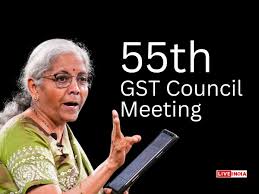India’s Transition from Minimum Wage to Living Wage
India, one of the world’s fastest-growing economies, is undergoing a significant transition in its wage policies. The shift from a minimum wage to a living wage has garnered attention and debate nationwide. This transition marks a pivotal moment in India’s labor landscape, promising better livelihoods for millions of workers while posing challenges for businesses and policymakers alike.
The concept of a minimum wage, though essential, has long been critiqued for its inadequacy in meeting the basic needs of workers. With rising inflation and living costs, the disparity between minimum wages and actual living expenses has widened, exacerbating poverty and inequality.
The transition from a minimum wage to a living wage stems from the recognition that all individuals deserve a standard of living that allows for dignity, health, and well-being. It aligns with the principles of social justice and human rights, emphasizing fair compensation for labor and tackling poverty at its roots.
The Indian government has taken proactive steps to facilitate this transition. Various states have revised their wage policies to reflect the concept of a living wage, ensuring that workers can afford a decent standard of living. Additionally, initiatives such as the Mahatma Gandhi National Rural Employment Guarantee Act (MGNREGA) aim to provide employment and income security to rural households, contributing to the realization of a living wage.
While the transition to a living wage is a progressive step, it poses challenges for industries, particularly small and medium enterprises (SMEs). Critics argue that higher wage mandates may lead to job losses or increased production costs, affecting competitiveness in the global market. Balancing the needs of workers with the sustainability of businesses remains a key consideration.
India’s transition from a minimum wage to a living wage reflects a paradigm shift in its approach to labor rights and social welfare. While challenges persist, this evolution signifies a commitment to inclusive growth and equitable development. By prioritizing the well-being of its workforce, India paves the way for a more just and prosperous future.

Why this News is Important
Addressing Income Disparity:
The shift from a minimum wage to a living wage addresses the widening gap between wages and living expenses, ensuring that workers can afford a decent standard of living.
Promoting Social Justice:
This transition aligns with principles of social justice and human rights, emphasizing fair compensation for labor and promoting dignity and well-being among workers.
Impact on Poverty Alleviation:
By ensuring that all individuals earn a living wage, India takes a crucial step towards poverty alleviation and inclusive growth, fostering socio-economic development nationwide.
Enhancing Workforce Productivity:
Adequate compensation motivates workers, leading to enhanced productivity and efficiency, which ultimately benefits businesses and the economy as a whole.
Policy Implications:
This transition underscores the need for comprehensive labor policies that balance the interests of workers and businesses, paving the way for sustainable and equitable development.
Historical Context
India’s transition from a minimum wage to a living wage is rooted in a long history of labor rights movements and policy reforms aimed at improving the welfare of workers. Since independence, successive governments have grappled with the challenge of ensuring fair wages while promoting industrial growth and employment generation. The concept of a living wage gained traction globally in the early 20th century, inspired by the principles of social justice and economic equality. In India, the discussion around wage reforms intensified in the wake of rapid economic liberalization and globalization in the 1990s. Rising inequalities and persistent poverty underscored the need for a more comprehensive approach to wage determination, prompting policymakers to revisit existing wage structures. The adoption of the Sustainable Development Goals (SDGs) further reinforced the imperative of decent work and economic growth, providing a framework for countries like India to prioritize labor rights and social welfare. Against this backdrop, India’s transition from a minimum wage to a living wage represents a significant milestone in its journey towards inclusive and sustainable development.
5 Key Takeaways from “India’s Transition from Minimum Wage to Living Wage”
| Serial Number | Key Takeaway |
|---|---|
| 1. | Shift from minimum wage to living wage for better livelihoods |
| 2. | Recognition of workers’ right to a decent standard of living |
| 3. | Government initiatives like MGNREGA support wage transition |
| 4. | Challenges for industries balancing wage mandates and competitiveness |
| 5. | Commitment to inclusive growth and equitable development |
Important FAQs for Students from this News
1. What is the difference between a minimum wage and a living wage?
Answer: The minimum wage is the lowest legal wage that employers can pay their employees, whereas a living wage is the income needed to cover basic expenses such as food, housing, and healthcare, ensuring a decent standard of living.
2. How does the transition from minimum wage to living wage benefit workers?
Answer: The transition ensures that workers can afford a decent standard of living, addressing income disparity and promoting social justice.
3. What are some government initiatives supporting the wage transition in India?
Answer: Initiatives like the Mahatma Gandhi National Rural Employment Guarantee Act (MGNREGA) provide employment and income security to rural households, contributing to the realization of a living wage.
4. What challenges do industries face with the transition to a living wage?
Answer: Industries, particularly small and medium enterprises (SMEs), may face challenges such as increased production costs or job losses, impacting competitiveness.
5. How does the transition from minimum wage to living wage contribute to inclusive growth?
Answer: By prioritizing the well-being of workers and reducing poverty, the transition fosters inclusive growth and equitable development nationwide.
Some Important Current Affairs Links















